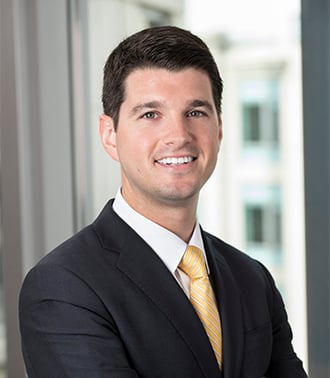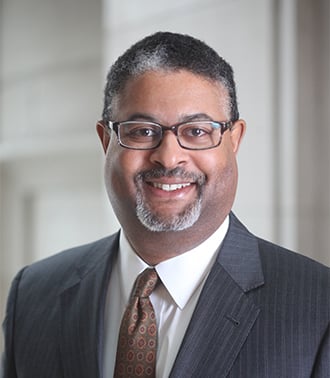Second Circuit Nixes Traders’ Convictions for False LIBOR Statements
Yesterday, the Second Circuit overturned the wire fraud and conspiracy convictions of two LIBOR traders based on “insufficient” evidence. The heart of the case is whether the LIBOR rate submissions at issue were false statements.
Background
The British Bankers Association (BBA) calculates the LIBOR benchmark rate based on estimates submitted by 16 member banks, including the bank that employed the defendants, Matthew Connolly and Gavin Black. The BBA instructs the member banks’ LIBOR submitters to provide to the BBA as its LIBOR estimate “the rate at which [the Bank] could borrow funds.” Connolly and Black did not submit the bank’s LIBOR rate, but they were derivatives traders whose trading positions could become more or less profitable depending on the BBA’s published LIBOR rate. As a result, Connolly and Black encouraged the bank’s LIBOR submitters to provide a higher or lower rate at different times in order to benefit their trading positions. On at least some occasions, the bank’s LIBOR submitters obliged. The bank’s LIBOR submitters – who cooperated with the government – testified that allowing their submissions to be influenced by Connolly and Black was “wrong” because it would “give [the bank] an unfair advantage in the market.”
The traders were charged with conspiracy and wire fraud based on these false statements. At trial, the district court instructed the jury (1) that the question was “whether Defendants made LIBOR submissions that reflected something other than honestly held estimates of the rate [the bank] would have accepted in order to borrow funds”; (2) that “whether [the bank] could have borrowed funds at a submitted rate is not dispositive of the falsity of its LIBOR submission”; and (3) that the government was not required to prove that the bank “could not have borrowed funds at the rate submitted to the BBA.”
Second Circuit’s Decision
In a unanimous decision, the Second Circuit reversed the convictions. The court held that the BBA’s instruction—which required banks to submit the rate at which it “could borrow funds” (emphasis added)—meant that it was not sufficient for the government to prove merely that the bank “would” not have borrowed funds at that rate. The Second Circuit dismissed the government’s argument that the bank’s LIBOR submissions had to be its “one best estimate” of the bank’s cost to borrow funds, or that such submissions contain an implicit representation that they were not influenced by other factors, such as a desire to increase the profitability of trading positions held at other departments within the bank. The court found persuasive evidence that (1) the bank’s LIBOR submissions were routinely—and appropriately—influenced by other, often subjective, factors and (2) the BBA did not expressly prohibit a bank’s LIBOR submission to be influenced by the desires of the bank’s derivative traders. So long as the bank’s LIBOR submission represented a rate at which the bank “could” borrow funds, the Second Circuit held, it could not have been false, even if the LIBOR submitter knew that there were in fact other rates at which the bank could have borrowed funds.
Implications of the LIBOR Ruling
The Second Circuit’s ruling could certainly be explained by reference to the plain language of the BBA’s instruction:
- The BBA asked banks to submit the rates at which they “could” borrow funds;
- This question is a hypothetical one, which necessarily includes a range of rates;
- So long as the bank’s LIBOR submission was within this range, the submission could not have been a false statement.
- This is true even if the LIBOR submission was influenced by factors that give the bank an “unfair advantage in the market.”
Both the DOJ and the SEC frequently bring fraud cases premised on the notion that an opinion not honestly held is a fraudulent statement. Because the allegedly fraudulent LIBOR submissions did not reflect the “honestly held” belief of the submitters – and were instead influenced by the desires of derivatives traders—it is tempting to conclude that the Second Circuit’s rejection of the government’s case threatens to upend the theory that the expression of a belief not honestly held is a fraudulent statement. However, by basing its holding on the language of the BBA’s instruction, the Second Circuit avoided such far-reaching implications. The Second Circuit held that the LIBOR submissions were indeed the expressions of a belief honestly held as to the rate at which the bank “could” borrow funds; the fact that such submissions were influenced by “unfair” factors did not alter this conclusion.
A tougher case is one involving market manipulation. For example, a short-selling research firm that fails to disclose its short position when publishing research likely to reduce the stock price of a target company is typically at risk for a charge of market manipulation (a subspecies of securities fraud). Yesterday’s ruling begs the question of whether such disclosure remains necessary. The short seller could certainly argue that—like the LIBOR submitters—it honestly believed in the validity of its research and the fact that its opinion may have been influenced by a desire to increase the profitability of its short position is just as irrelevant as the desires of the derivative traders in the Second Circuit’s ruling, so long as no representations are made to the contrary. The flipside of this argument is that (1) the Second Circuit’s ruling is confined to the language of the BBA’s instruction and (2) the court was interpreting the wire fraud statute (18 U.S.C. § 1343), and not section 10(b) of the Securities Exchange Act.
© Arnold & Porter Kaye Scholer LLP 2022 All Rights Reserved. This blog post is intended to be a general summary of the law and does not constitute legal advice. You should consult with counsel to determine applicable legal requirements in a specific fact situation.


